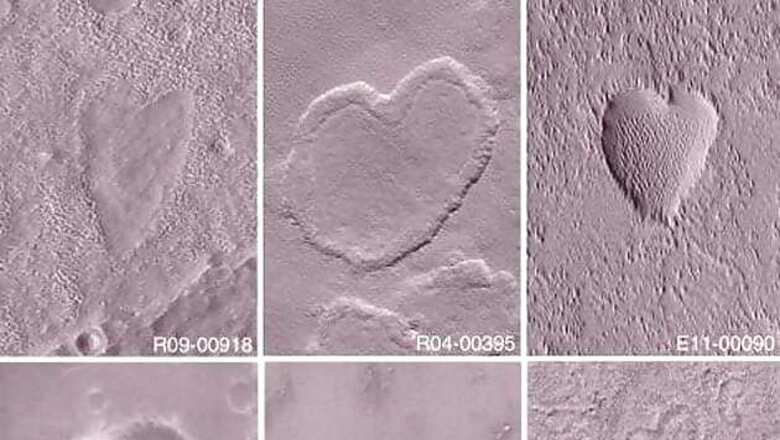
views
After the discovery of 'Australia' by NASA's Curiosity Rover, scientists have now located a heart shape on Tharsis Bulge, a region home to some of the Red planet's biggest ancient volcanoes.
Formed most likely through volcanic activity, the heart shape was spotted by the High Resolution Imaging Science Experiment camera aboard NASA's Mars Reconnaissance Orbiter orbiting 170 miles above.
Located south of the huge shield volcano Ascraeus Mons, it measures approximately 200 metres across. The feature is multi-layered and rises above the surrounding landscape.
"Perhaps this feature is an ancient vent structure (an opening in the ground from which volcanic lava emerges) that has been more resistant to erosion than the surrounding area, so that it resembles 'inverted' terrains," planetary scientist Ramy El-Maarry was quoted as saying.
Inverted terrains often occur when some part of the landscape becomes hardened to erosion.
NASA's Mars rover Curiosity's camera earlier photographed a rather interesting-looking rock formation that resembles Australia.

















Comments
0 comment